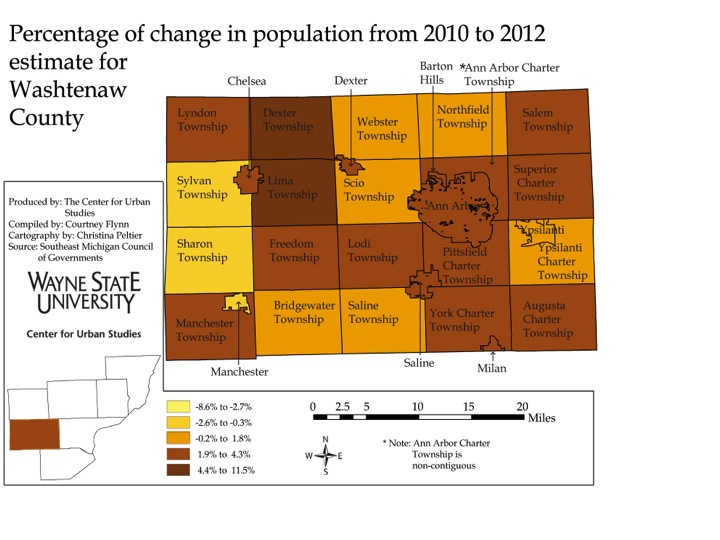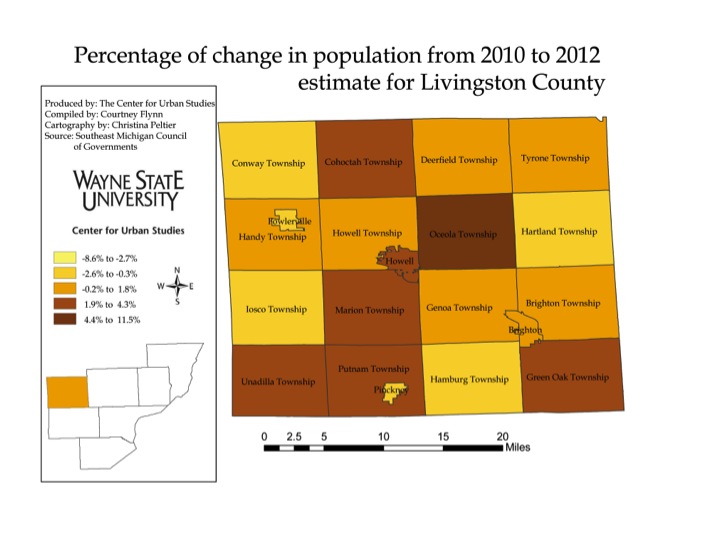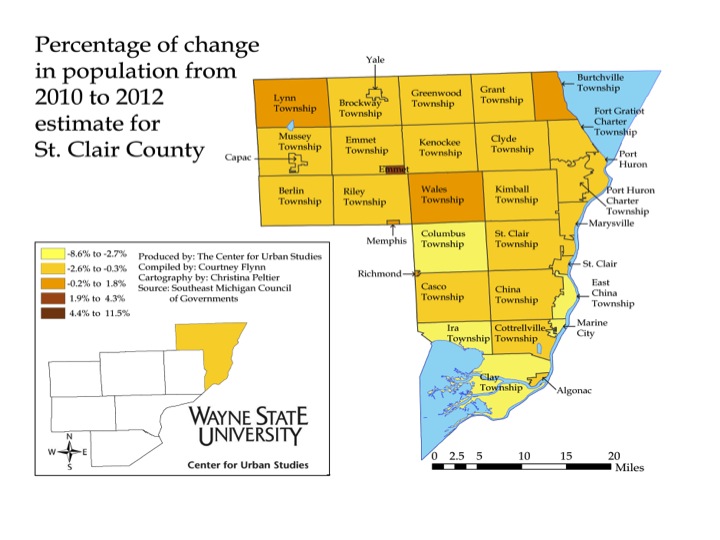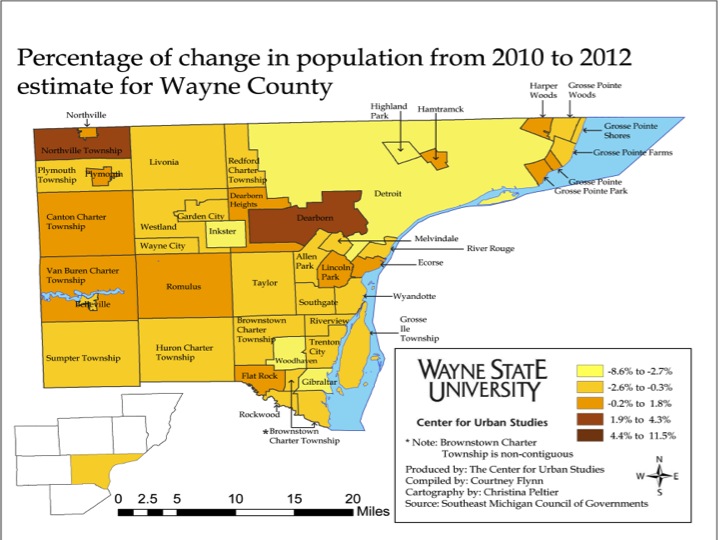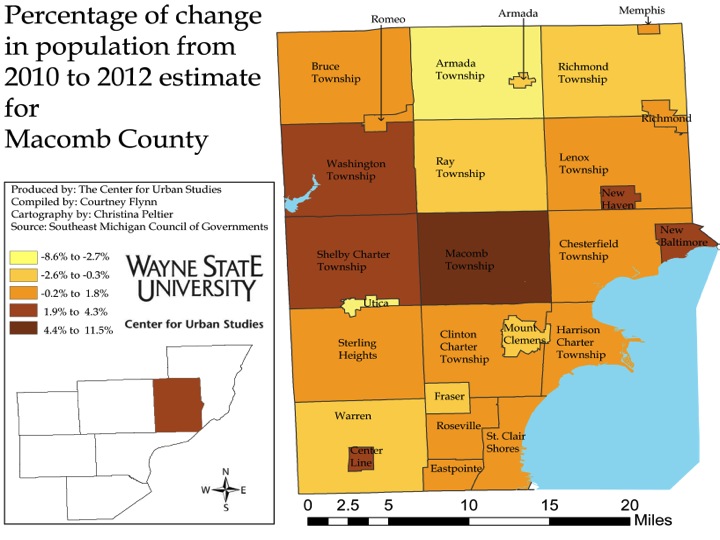This post examines the number of fall-related calls placed to Detroit EMS from January 1, 2010 to August 26, 2012 . Both the frequency and distribution of these calls are examined, along with the type and number of injuries suffered from the falls. All information obtained was from Detroit EMS. Overall, the post shows that the city’s downtown, predominantly in the area between M-10 and I-375, is where the highest number of falls occurred. The most frequent type of fall was one where the victim fell from less than six feet and suffered no injuries. The most common reported reason for falls was an altered state of consciousness, which could range from an inability to focus to a concussion. In addition to examining fall-related calls for the entire City of Detroit, three neighborhood areas are also highlighted at the end of this post. These three areas (North End and Crossman, Osborn, and Southwest) are highlighted because they are CLEARCorps target areas for the Green and Healthy Homes-Detroit Initiative, which aims to reduce housing related health-risks through “comprehensive home-based assessments and interventions, public outreach and education, and local partnerships.”
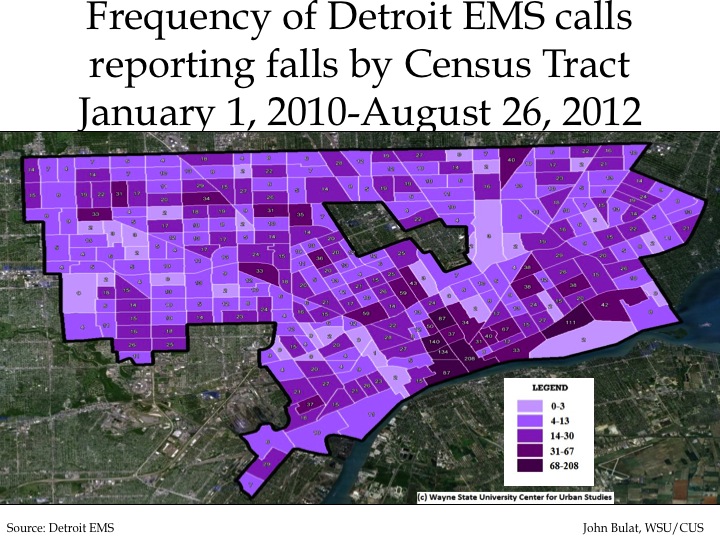
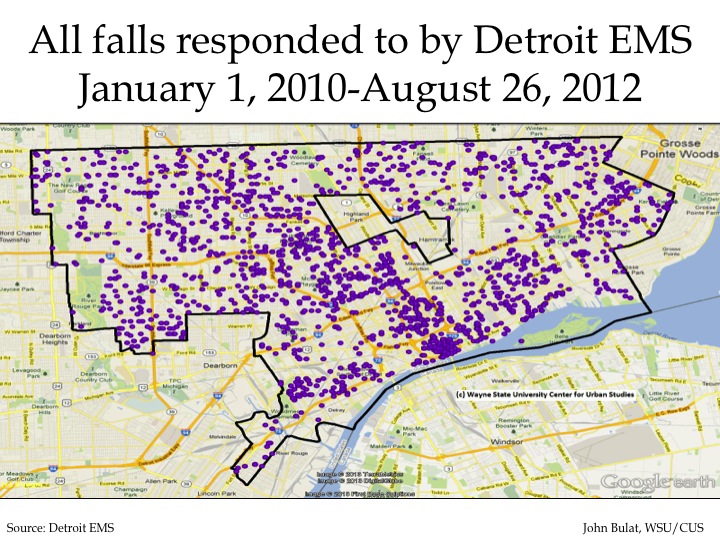
The above maps show the frequency and distribution of fall-related calls Detroit EMS personnel responded to from January 1, 2010 to August 26, 2012. In total, EMS responded to 4,853 calls in that time frame, most of which were concentrated along the city’s downtown near the Detroit River between M-10 and I-375. In that area there are six Census tracts with the highest range of calls (over 67 calls); no other Census tract in the city received more than 67 calls during that time period. For the Census tracts in dark purple there were a total of 767 fall related calls. There was also a concentration of falls around Woodward Avenue.
In the second map, which shows the distribution of falls in the city, one dot is equal to one fall related call. This remains true in all other distribution maps in this post.
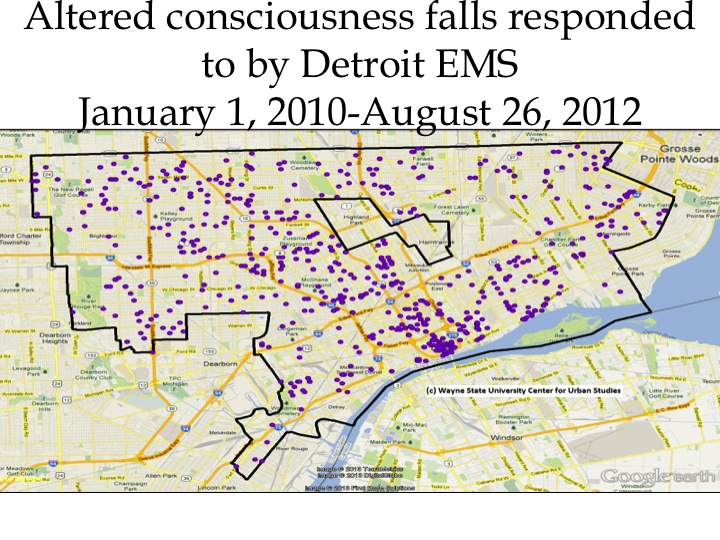
The above map shows the distribution of EMS calls reporting falls associated with the victim having altered consciousness following the incident. In total there were 750 such calls. Similar to the first frequency map of all falls, this map shows the highest concentration of such falls was located downtown, along the Detroit River and down Woodward Avenue.
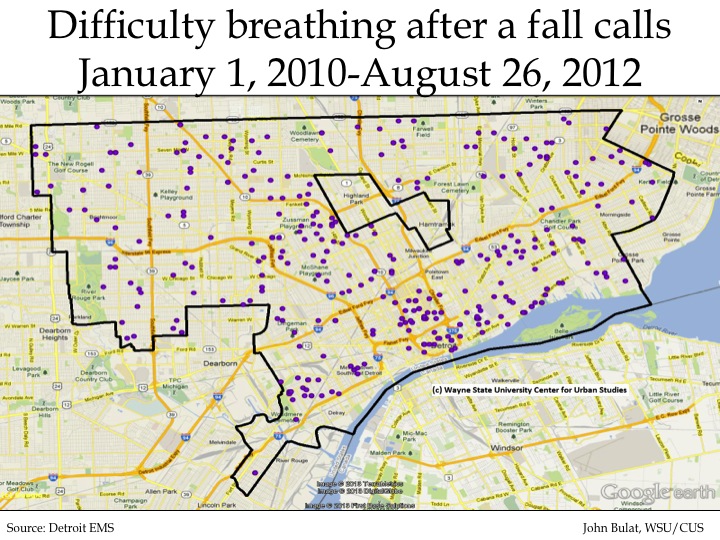
In the time frame examined in this post, there were 350 calls where the victim of a fall had difficulty breathing following the incident. As can been seen, these type of fall-related EMS calls did not occur as often as other types of fall-related calls and were less concentrated in the downtown area of the City of Detroit.
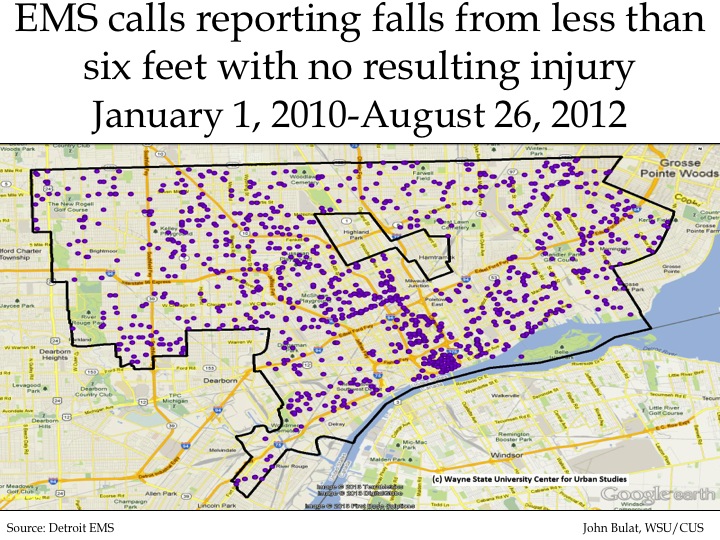
Of the type of fall calls to EMS examined in this post, there were 1,653 instances where a person fell less than six feet and suffered no injuries. These made up 34 percent of the fall calls received by Detroit EMS during the time period examined. There was a heavy concentration of these calls received in the city’s downtown, between M-10 and 375. There was also a string of such incidents just west of I-94, between I-75 and I-96.
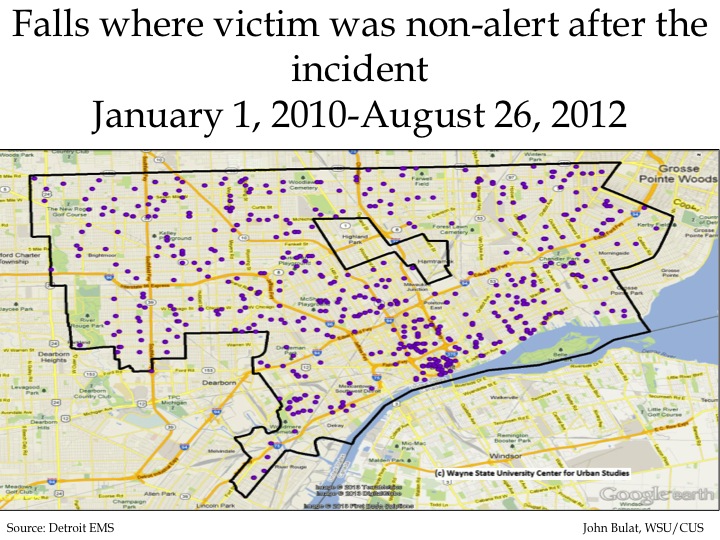
There were 612 calls to the Detroit EMS from January 1, 2010 to August 26, 2012 related to a person falling and being non-alert following the incident. Aside from the concentration of such falls in the city’s downtown between M-10 and I-375, these calls are fairly evenly distributed throughout the city.
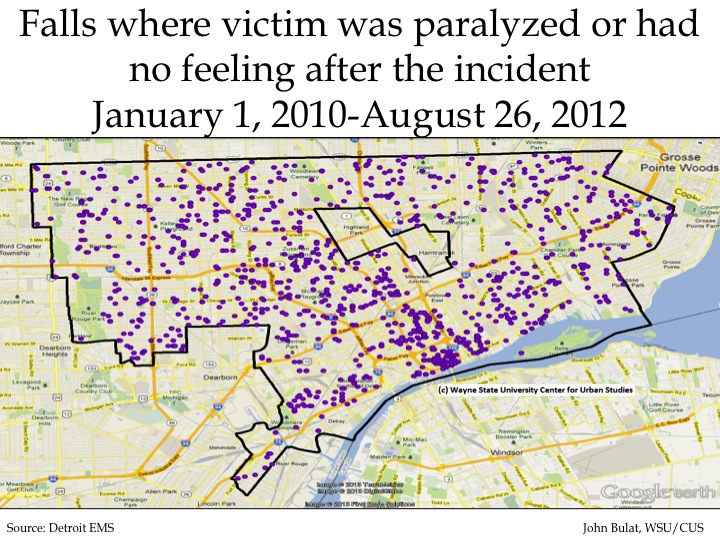
Between January 1, 2010 and August 26, 2012 Detroit EMS responded to 1,488 calls where the injured person was paralyzed or had no sense of feeling following the incident.
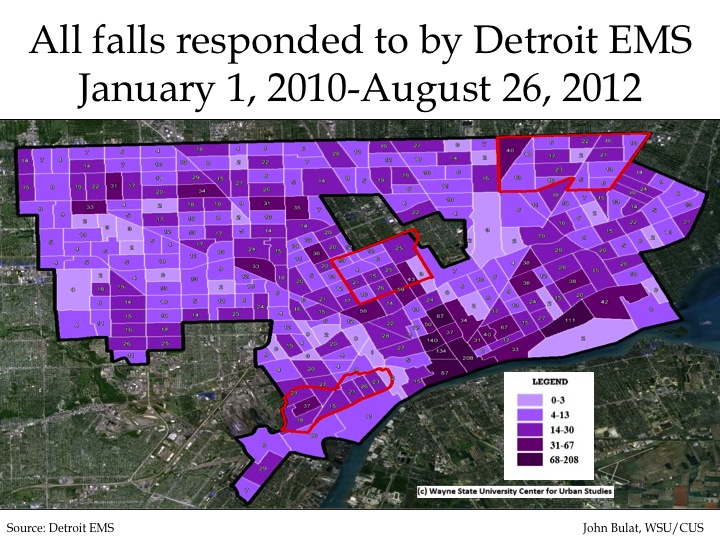
The Green and Healthy Homes-Detroit Initiative aims to reduce housing related health-risks through “comprehensive home-based assessments and interventions, public outreach and education, and local partnerships.” Through this initiative, ClearCorps is targeting three neighborhoods for housing hazard identification and remediation. These neighborhoods are the North End and Crossman area (the center target area), the Osborn area (the north target area) and the Southwest area. The map above shows that none of these target areas had Census tracts were Detroit EMS responded to more than 67 falls. All three areas did have at least one Census tract with the second highest range (31-67) of fall-related calls.
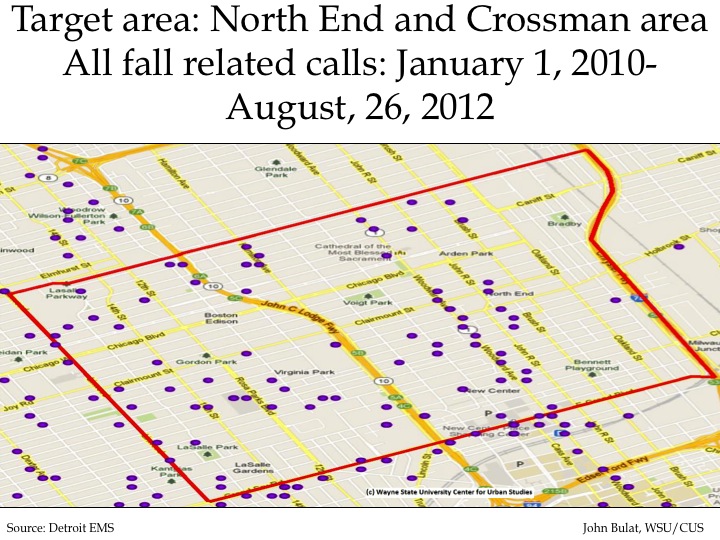
In the North End and Crossman area there were about 70 total fall-related calls made to Detroit EMS from January 1, 2010 to August 26, 2012. Of those calls, the following types of fall-related calls were responded to:
(The categories below are not mutually exclusive.)
•Altered consciousness: 27
•Difficulty breathing: 9
•A fall from less than 6 feet with no injury: 45
•No alert: 18
•Paralyzed/loss of feeling: 41
In the Osborn area there were about 80 total fall-related calls made to Detroit EMS from January 1, 2010 to August 26, 2012. Of those calls, the following types of fall-related calls were responded to:
(The above categories are not mutually exclusive)
•Altered consciousness: 25
•Difficulty breathing: 13
•A fall from less than 6 feet with no injury: 60
•No alert: 30
•Paralyzed/loss of feeling: 48

In the Southwest area there were about 60 total fall-related calls made to Detroit EMS from January 1, 2010 to August 26, 2012. Of those calls, the following types of fall-related calls were responded to:
(The categories are not mutually exclusive)
•Altered consciousness: 19
•Difficulty breathing: 20
•A fall from less than 6 feet with no injury: 40
•No alert: 21
•Paralyzed/loss of feeling: 40

